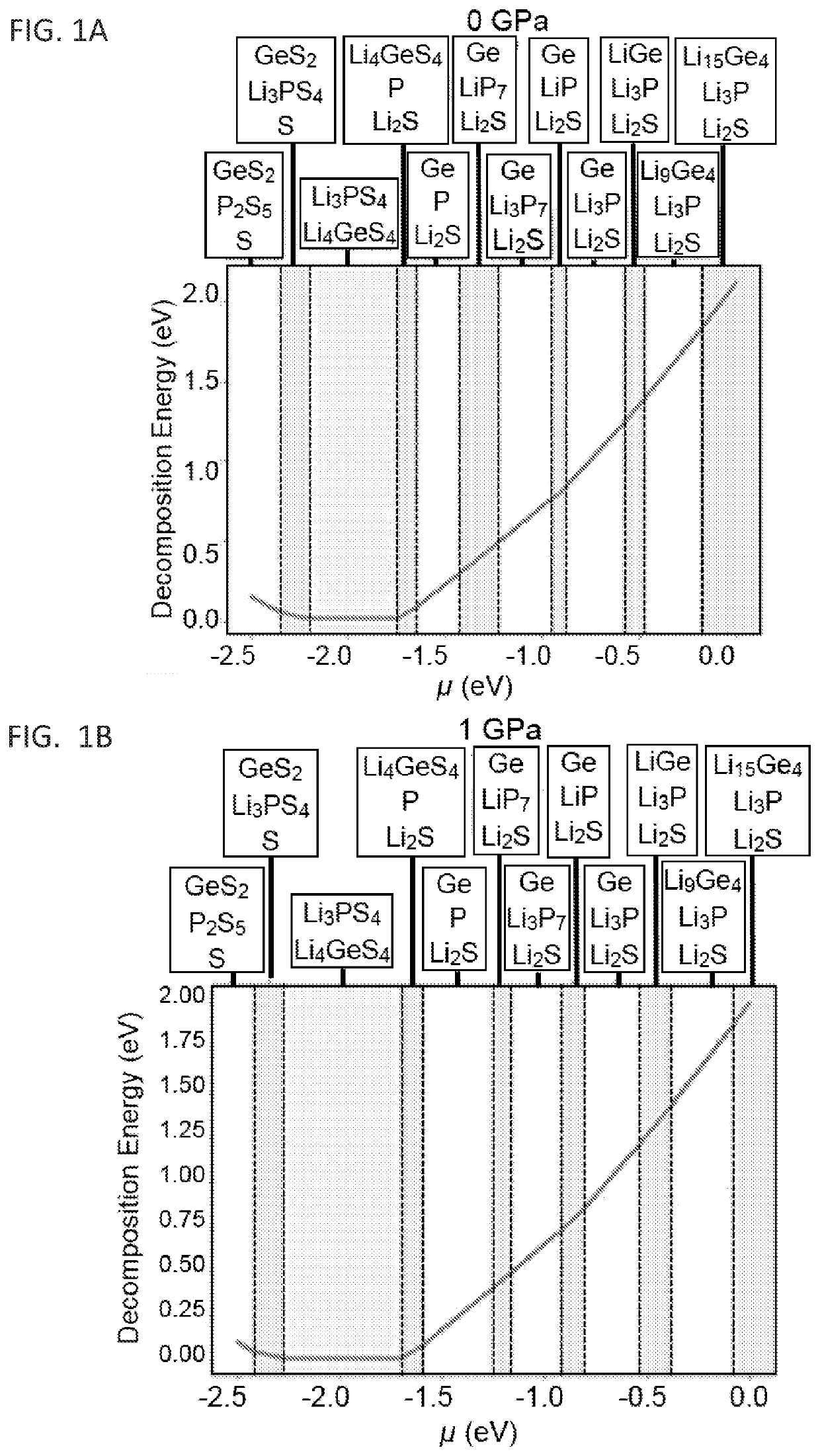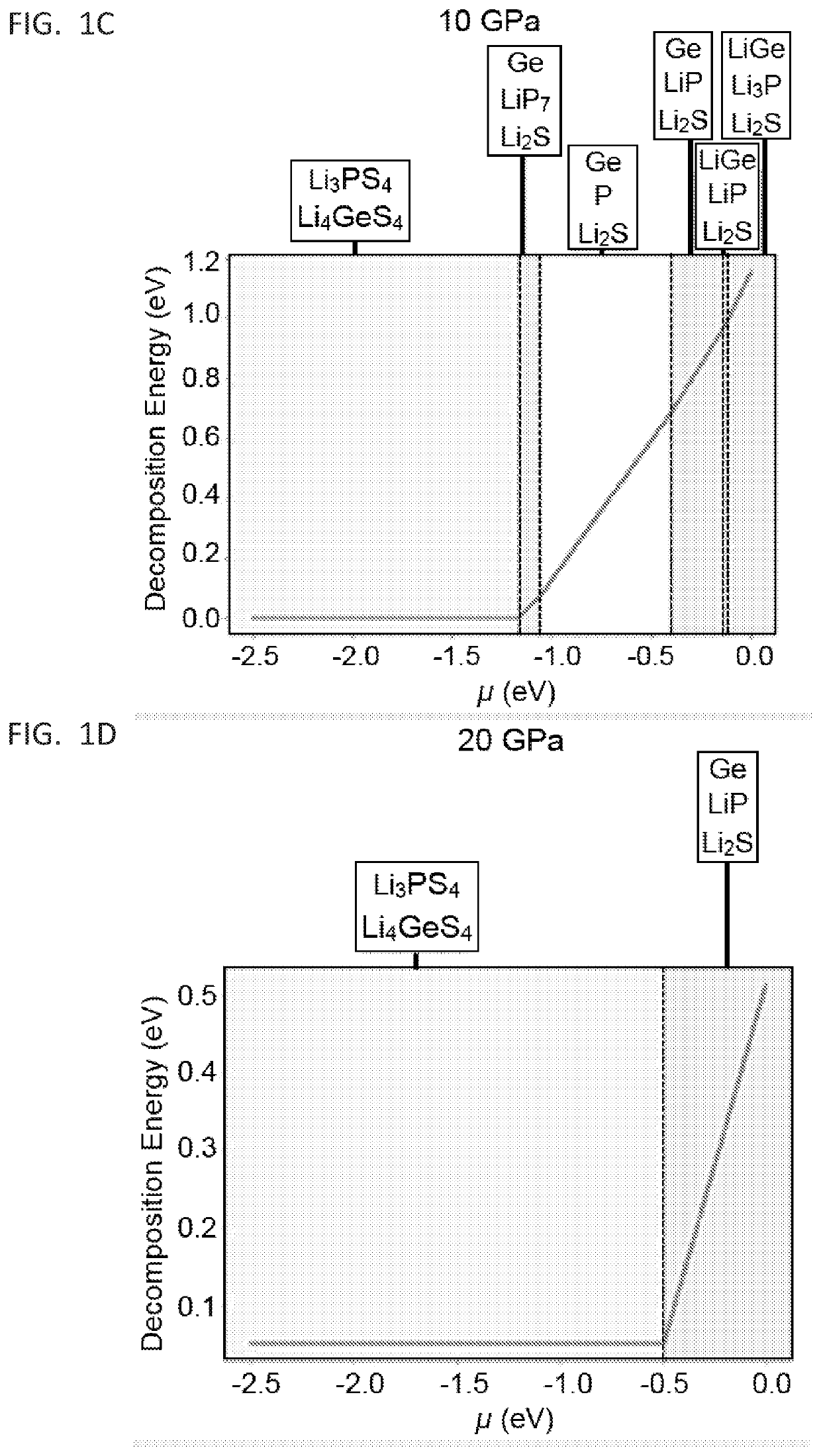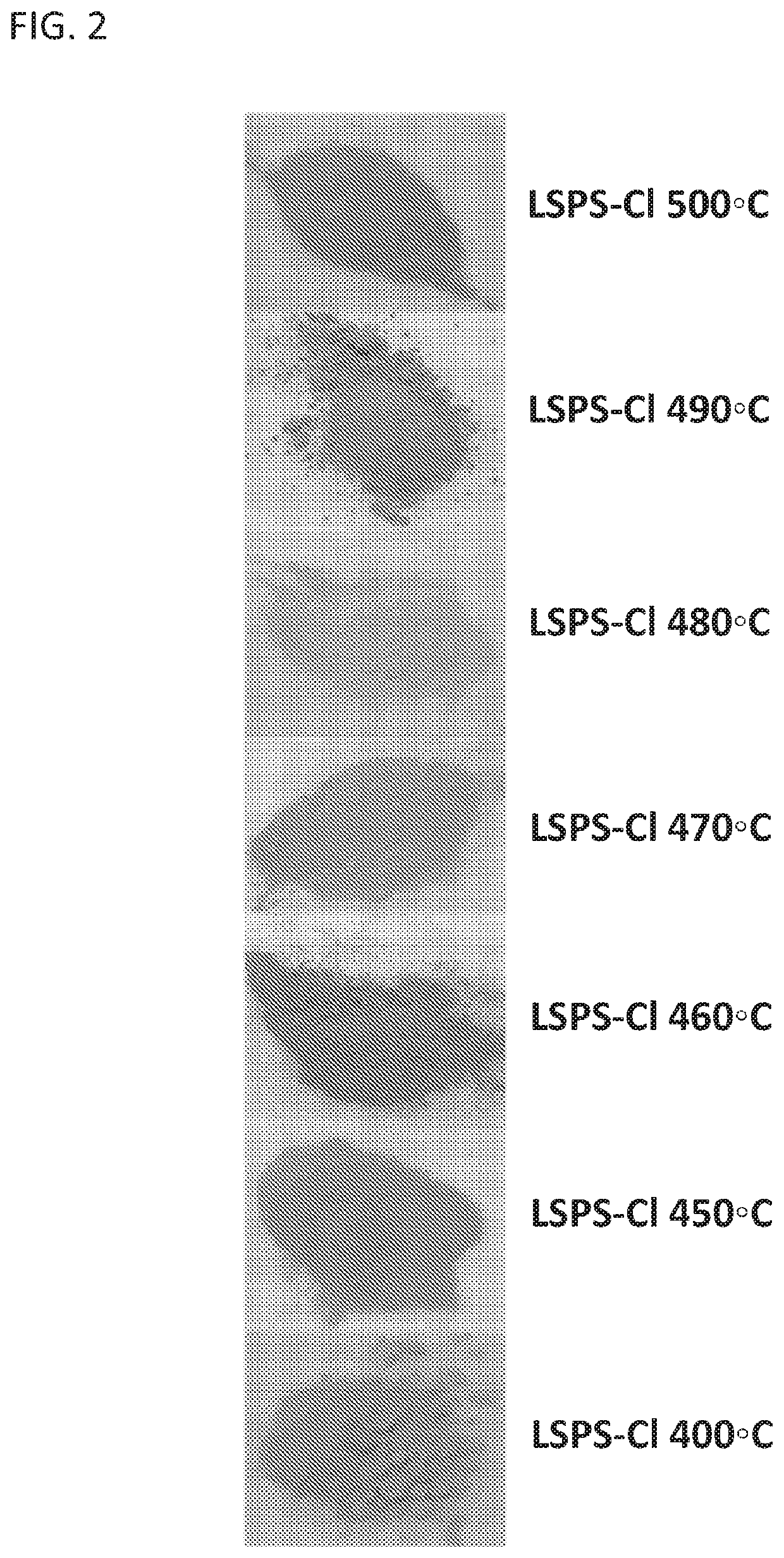Solid state electrolytes and methods of production thereof
a technology of solid state electrolytes and alkali metal sulfide, which is applied in the direction of electrolytes, electrochemical generators, cell components, etc., can solve the problems of inability to use practicality and inhibit the material of battery electrodes, and achieve stable solid state electrolytes, high voltage stability, and excellent battery cycle performance.
- Summary
- Abstract
- Description
- Claims
- Application Information
AI Technical Summary
Benefits of technology
Problems solved by technology
Method used
Image
Examples
example 1
ng the Stability of Core-Shell Electrolyte Powders Using DFT
[0090]Our DFT simulation and further analyses based on the formalism described herein shows that LSPS decay remains largely unchanged with doping and initial composition in a zero-pressure environment. This suggests a narrow voltage stability window similar to the related solid state electrolyte, Li-doped germanium-phosphorous-sulfur (LGPS) at zero pressure 19,20 (FIG. 3A). The application of a shell with certain rigidity greatly improves the stability window (FIG. 3B). Additionally, Equation 1 underestimates the reaction strain as the decay converts a single crystal solid electrolyte to a polycrystalline mixture. In the latter case, perfect packing is unlikely. If the decay products have a packing efficiency of η, then the reaction strain would be given by equation 12:
ϵRXN=Vdη-1-VSEVSE(12)
[0091]FIG. 3C illustrates the significant potential impact of such a packing efficiency increases the voltage stability window, suggesti...
example 2
of Chloride Doped Li Ion Sulfide-Based Solid State Electrolytes
[0096]The starting materials used for the synthesis of Li9.54Si1.74P1.44S11.7Cl0.3 solid state electrolyte were Li2S (>99.9% purity, Alfa Aesar), P2S5 (>99% purity, Sigma Aldrich), SiS2 (>99% purity, American Elements) and LiCl (>99% purity, Alfa Aesar). All of the reagents were weighed in the appropriate molar ratio and then placed into a ZrO2 ball-mill jar containing ZrO2 milling balls. All of the procedures were conducted under an argon atmosphere inside a glove box. The mixture was then mechanically milled using a planetary ball milling facility for 40 h. Following the ball milling procedure, the mixture was sealed into glass tubes and then heated at 400° C., 450° C., 460° C., 470° C., 480° C., 490° C., and 500° C., respectively, for 8 h, followed by a slow cooling procedure back to room temperature.
example 3
cterization of Different Sulfide-Based Solid State Electrolytes
[0097]Li9.54Si1.74P1.44S11.7Cl0.3 powders (LSPS-Cl) were synthesized at 7 different annealing temperatures ranging from 400° C. to 500° C. The colors of the as-synthesized LSPS-Cl powders shown in FIG. 2 change along with the annealing temperature from 400° C. to 500° C. For example, LSPS-Cl annealed at 450° C. shows a red color, while the LSPS-Cl annealed at 400° C. has a white color. Despite the different colors, all of the as-synthesized LSPS-Cl powders annealed at various temperatures were confirmed to belong to the same space group, P42 / nmc(137), by X-ray diffraction (XRD). XRD data were obtained using a Rigaku Miniflex 6G with a Cu target X-ray source (wavelength=1.54056 Å). The various LSPS-Cl powders were placed onto standard XRD sample holders and sealed with Kapton film and vacuum grease under an argon atmosphere in a glove box. Structural parameters were refined in the Topas software using the Rietveld refinem...
PUM
| Property | Measurement | Unit |
|---|---|---|
| Young's modulus | aaaaa | aaaaa |
| temperature | aaaaa | aaaaa |
| temperature | aaaaa | aaaaa |
Abstract
Description
Claims
Application Information
 Login to View More
Login to View More - R&D
- Intellectual Property
- Life Sciences
- Materials
- Tech Scout
- Unparalleled Data Quality
- Higher Quality Content
- 60% Fewer Hallucinations
Browse by: Latest US Patents, China's latest patents, Technical Efficacy Thesaurus, Application Domain, Technology Topic, Popular Technical Reports.
© 2025 PatSnap. All rights reserved.Legal|Privacy policy|Modern Slavery Act Transparency Statement|Sitemap|About US| Contact US: help@patsnap.com



